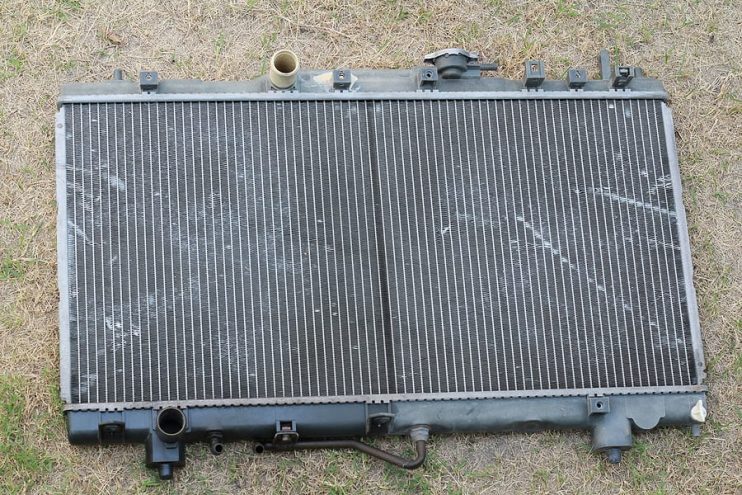
Every car produces heat. Not only from the combustion in the engine, but also from fast moving parts such as the wheel bearings. Without proper cooling, your car could potentially overheat or even catch fire. Your radiator is your number one defence against high engine temperatures – so how can you ensure this part is working properly? And more importantly, what are the signs your radiator could be suffering from problems?
How does the Radiator Work?
Radiators are heat exchangers. The coolant is pumped around the engine, picking up heat energy as it traverses around the different parts and systems. The radiator, which is usually made out of aluminium or some highly conductive metal, then pipes this coolant into thin tubes (often known as fins) which are exposed to the air rushing through the front of the car. The outside of the metal is cooled down, which dissipates the heat energy of the coolant – in turn cooling down the liquid. This cold liquid is then recirculated in the engine, to pick up more heat, and further aid the cooling process.
Because the radiator uses thin tubes and a coolant pump system, it is prone to failure and blockages over time. Many problems that occur in the radiator can be resolved with early action and proper diligence. Because the radiator is so important to the engine, keeping one eye on its performance should be a concern for every car owner.
1. Overheating
When the radiator fails – the car will most likely overheat. You may see steam rising from the engine or the temperature gauge constantly telling you that the engine is getting too hot. Normally cars will operate around 90c-105c – if they start getting hotter, damage can occur throughout the engine. Be aware that in the summer, your temperatures are likely to creep over the high heat mark, due to the warmer weather. However, consistent readings from your heat gauge should be taken as an indicator there is some kind of problem with the radiator.
Causes
If you are experiencing consistent overheating, then it could be due to the radiator corroding internally due to rust, build ups of internal deposits, or debris preventing the coolant circulating properly within the engine.
What to do
Address the problem immediately as fixing a radiator is likely to be less expensive than repairing other major parts in the engine that will be damaged by inefficient cooling. Firstly, however you can check and replace the coolant at home, and see if this has any effect, to ensure that it’s not simply an issue with dirty or old coolant. If replacing the coolant has no effect, then get to a mechanic to have the radiator checked out.
Also note that all the other problems on this list will lead to overheating, so if you prefer, make sure you check out the other symptoms before you take the car to the garage – if you think you’re capable of identifying and resolving the problem on your own.
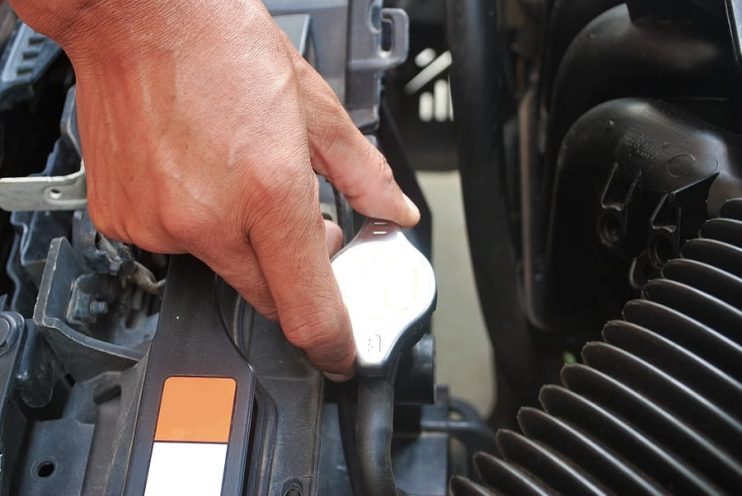
2. Leaking Coolant
Have you observed patches of brightly coloured coolant in the areas where your car has been parked overnight? This could be due to leaks or cracks in the radiator. You may also find that you’re adding coolant to the radiator more regularly than usual, in response to the low coolant light.
Causes
The housing or cooling fins in the radiator can accrue damage over time, especially if the radiator becomes clogged due to severe rust build up. Using low quality coolant or tap water, rather than distilled water, can add contaminants to the coolant that increase the chances of rust build up. Failure to regular flush the radiator can also increase rust.
What to do
If you do not address problems with the coolant system quickly, this could lead to knock on damage in the engine due to overheating. Take your vehicle to a professional mechanic, who will perform a pressure test using coloured dye to determine if the radiator is broken – which could mean a replacement radiator.
3. Sludge Build Up
If your coolant appears discoloured – often a rusty oil colour – then you need to investigate further as this can mean it’s not circulating correctly in your engine. Often checking the coolant overflow tank can be key to quickly checking the condition of the coolant.
Causes
Over time as problems occur in the radiator, this can prevent the coolant circulating effectively within the engine, leading to sludge building up within the system. One cause can be a transmission cooler problem inside the radiator. Over time the barrier between the transmission fluid and coolant erodes causing contamination.
What to do
Firstly, if the problem is not too bad you can perform a radiator flush to get rid of the old coolant as this may resolve the issue. If this fails to resolve the problem, be aware there can be many causes of coolant contamination within your engine. Regardless of the culprit, degraded coolant will not aid in engine heat dissipation. Get to the mechanic who will be able to provide a proper diagnosis and advise on a fix.
4. Blocked Exterior Radiator Fins
The radiator pumps hot coolant into the thin metal pipes in the fins at the front of the car. The cold air then quickly cools the metal and in turn reduces the heat of the coolant inside. This is the key mechanism that allows the car to regulate heat. If these become blocked, the air can’t circulate as well, reducing the potential heat loss.
Causes
Anything that’s in the air can get caught in the fins. From larger pieces of pollen, bug, dirt, leaves or even soot – all of these particles can get lodged in the gaps, and over time as the blockages build up, these in turn can catch even more material.
What to do
Fortunately this is one of the simpler problems on our list to fix. Remove any cover on the radiator, and use a garden hose with a diffuser nozzle to wash out any debris stuck in the radiator.
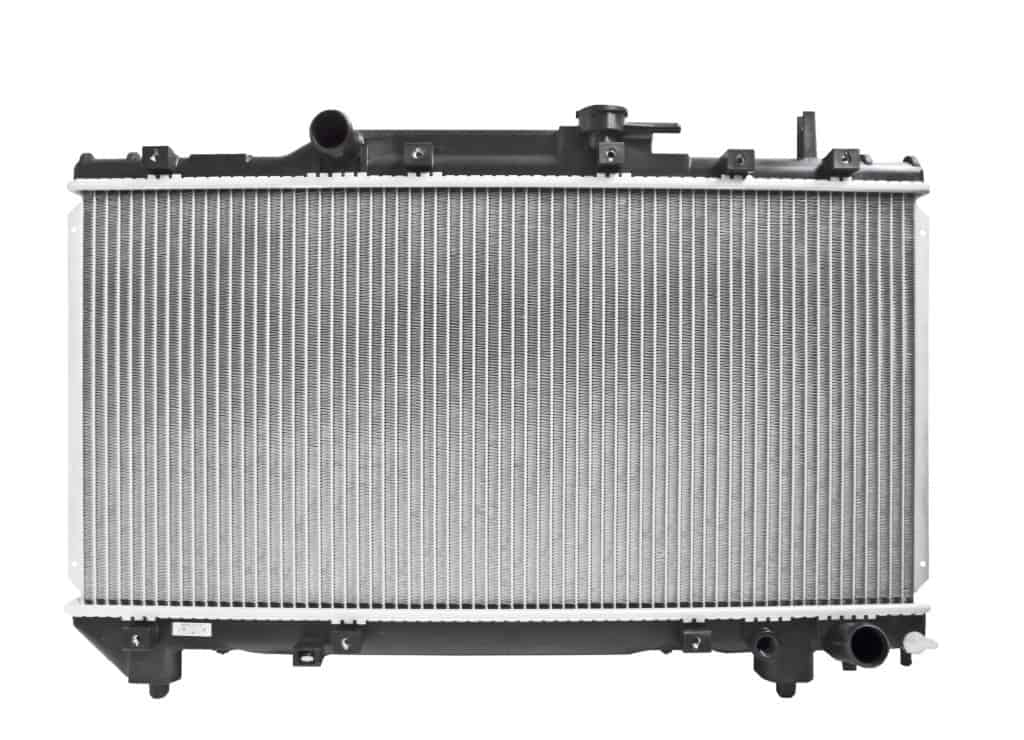
5. Bent or Damaged Radiator Fins
If the radiator fins become damaged, then ruptures and bends in the metal can stymie and prevent proper airflow reaching the coolant.
Causes
We’ve just looked at how particles can block the radiator fins. Larger pieces of rock or gravel pinging off these delicate pieces of metal can also cause damage, bends and warping. It’s even possible for problems to originate during a cleaning process (so be careful with blockages) or maintenance work.
What to do
If you think the damage to the fins is only small, then it is possible to use duck bill pliers to straighten out the problem areas. Grasping the damaged section with the flat plates in the jaws, use leverage to gently flatten each fin. If the damage is extensive, you may be looking at replacing the radiator.
6. Passenger Area Heater Problems
One for the cold weather? Are you noticing that the engine has been running for a while, but there’s not enough heat coming out of the rear heating vents? You could actually be looking at a problem with a clogged radiator.
Causes
If the radiator’s heater core is clogged or has a leak, then a lack of hot coolant in the radiator core can lead to a failure to heat enough air to raise the temperature in the rear of the car.
What to do
Check the thermostat to ensure that this is not the principle problem. If the thermostat seems to be operating properly, then you need to get the radiator checked out.
7. Collapsed Radiator Hose
Noticing problems with your car overheating at high revs, or at high speed out on the open road? Although this problem is difficult to diagnose, it could be due to a collapsed radiator hose.
Causes
Most hose collapses are caused by a faulty radiator cap creating a vacuum. Caps are designed to release some of the negative pressure caused by coolant contraction. If this fails to happen, it can collapse the radiator hose.
What to do
In most cases this problem can be overcome by simply cleaning out the old radiator cap or purchasing a new one. If the problem of overheating doesn’t go away however, it may be advisable to get a mechanic to check out the coolant system, before further damage occurs.
Replacing your Car’s Radiator
If you do discover that the damage is terminal, then it’s not out of the question for you to perform your own radiator replacement. With the right tools, a good modicum of mechanical knowledge and some good instructions, it’s possible to change the old part out for a replacement car radiator.

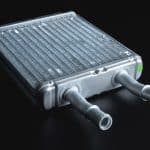
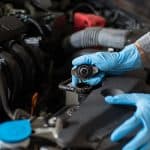
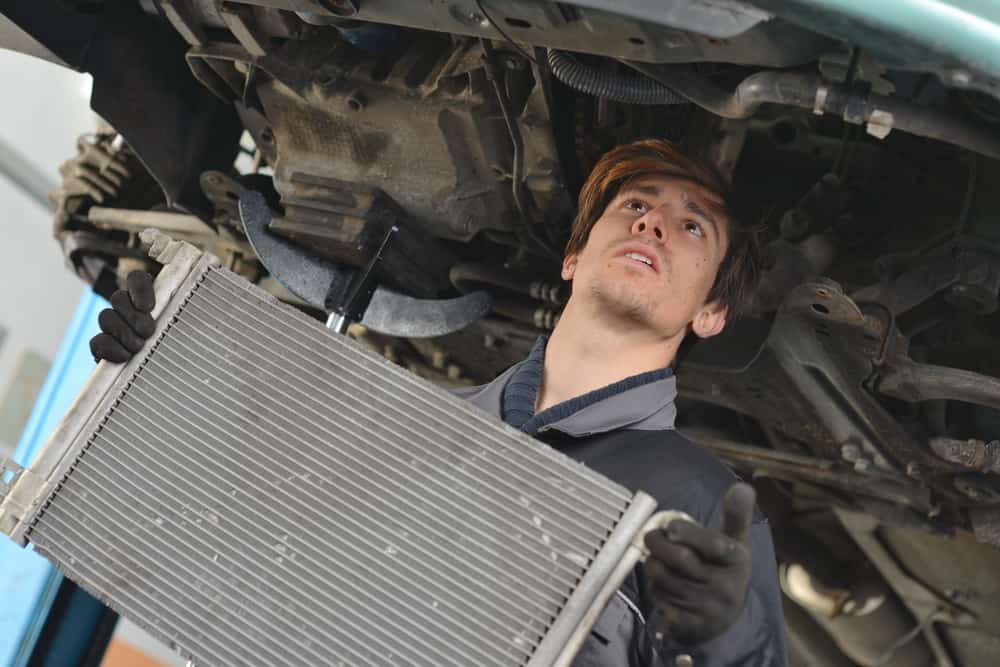
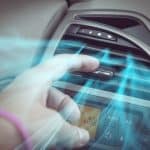
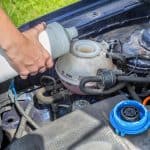
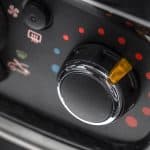

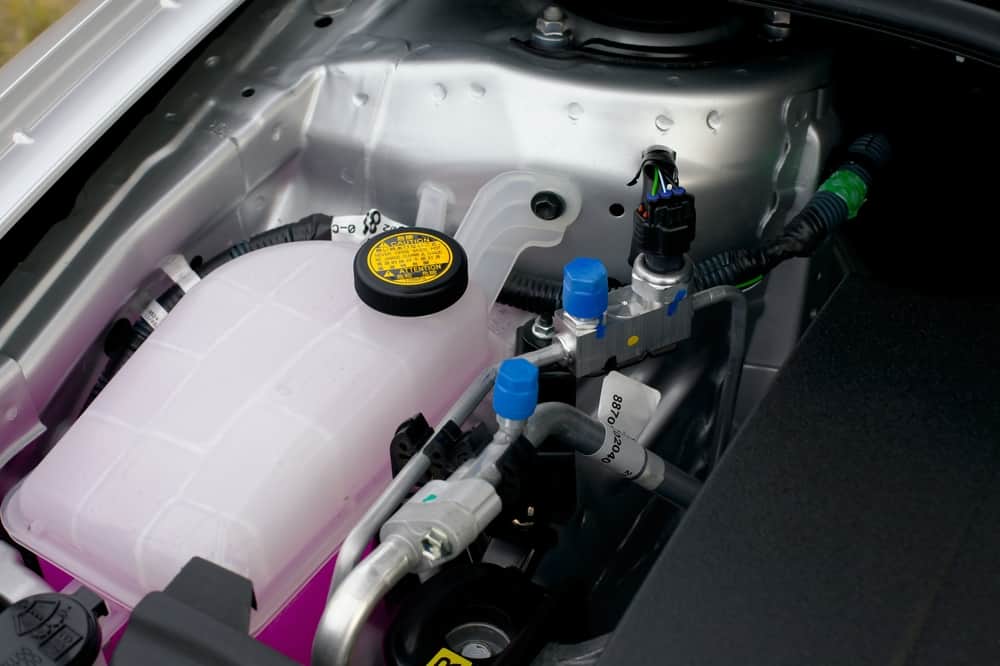
.png)